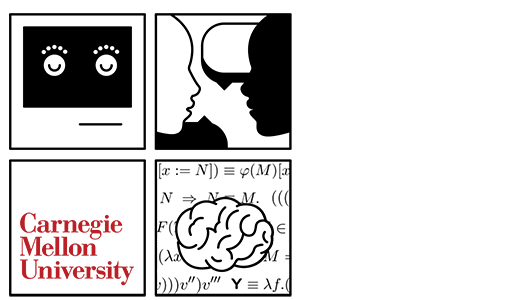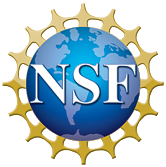Student Session
NASSLLI Student Session
Student poster sessions will take place in the coffee break area (Baker Hall A50) during the lunch block (11:45-1:30), Tuesday through Thursday
Program:
Tuesday, June 26
Understanding Code-Mixed Dialogues in Context - Emily Ahn (CMU) and Cecilia Jimenez (Pittsburgh)
Frame-Semantic Parsing for French with LTAG Supertagging - Tatiana Bladier (HHU Düsseldorf)
Inexact Knowledge as an Inexact Update - Michael Cohen (Stanford)
I argue that a correct formulation of inexact perceptual knowledge must take into account the dynamics of inexact observations. I develop a novel version of Dynamic Epistemic Logic (DEL) which allows for inexact epistemic updates, and discuss its connection with hybrid logic. My account aims to dissolve the philosophical problems related to inexact knowledge and to provide a more realistic logic of perceptual knowledge.
Influence of Believed Number of Viable Hypotheses on Hypothesis Choice in a Social Setting - Lauren Edlin (Bielefeld)
Demonstratives and (Non-)Restrictive Relative Clauses in Mandarin - Jackie Lai (Chicago), Yenan Sun (Chicago)
Choosing Additive Particles in Wh-Questions - Nadine Theiler (Amsterdam)
Wednesday, June 27
A Suppositional Theory of Conditionals - Sam Carter (Rutgers)
- Suppose that the butler did it. Then the gardener is innocent.
- If the butler did it, then the gardener is innocent.
“The basic concept required for the interpretation of if-sentences is that of supposing […] To assert ‘If p, q’ is to assert q within the scope of the supposition that p” (1973, 92-93).
This project develops a suppositional theory of conditionals. However, it differs from extant theories in (i) arguing for a precise semantic connection between instructions to suppose and conditional antecedents, and (ii) providing novel linguistic data in favor of that theory.
Distributive Numerals in Mandarin Chinese at the Syntax-Semantics Interface - Sherry Yong Chen (MIT) and Filipe Hisao Kobayashi (MIT)
Scalar Implicatures and Sentence Similarity in Distributional Semantics - Maxime Corbeil (UQAM)
From Narrative Text to VerbNet-Based DRSes - Gang Ling (Nebraska-Omaha)
Deriving Free Relatives in Minimalist Grammars: Feature Recycling and Reproject - Richard Stockwell (UCLA)
I consider how to derive free relatives – e.g. John eats [DP what Mary eats] – in Minimalist Grammars (Stabler 1997). Free relatives are string-identical to indirect questions – e.g. John wonders [CP what Mary eats]. An analysis of free relatives as nominalised indirect questions is easy to implement, but empirical evidence points instead to wh-words ‘reprojecting’ in free relatives (Donati 2006). I propose two innovations in Minimalist Grammars to implement a reprojection analysis: (i) feature recycling and (ii) a Reproject operation.
Thursday, June 28
A Plea for Inexact Truthmaking - Michael Deigan (Yale)
English Acronyms in Chinese Text and Speech: A Corpus Analysis - Hai Hu (Indiana)
Strength in Possibility Modals: From Weak Necessity to Strong Possibility - Tommy Tsz Ming Lee (USC)
Contextual, Lexical, and Structural Factors Licensing Mention-Some Embedded Questions - Morgan Moyer (Rutgers) and Kristen Syrett (Rutgers Faculty)
SMT-Based CASP Solver EZSMT+ - Da Shen (Nebraska-Omaha)
Constraint answer set programming (CASP) is a paradigm designed to tackle several issues of answer set programming tools. Recently, a method is proposed to find solutions to CASP programs by using satisfiability modulo theories (SMT) solvers.
This SMT-based approach is implemented in a system called EZSMT, which often outperforms its peers. Yet, it has several limitations. For instance, it is unable to process a large class of programs called "non-tight". This restriction does not allow users to express, for example, reachability relations between cities connected by roads on a map. Solving non-tight programs is important, because they are crucial in many applications.
Here we extend EZSMT for non-tight programs and constraints over mixed domains of reals and integers. We also extend EZSMT to allow the computation of multiple solutions. Our experimental analysis shows that the extended EZSMT system is a compatible tool compared to state-of-the-art CASP solvers CLINGCON and EZCSP.







